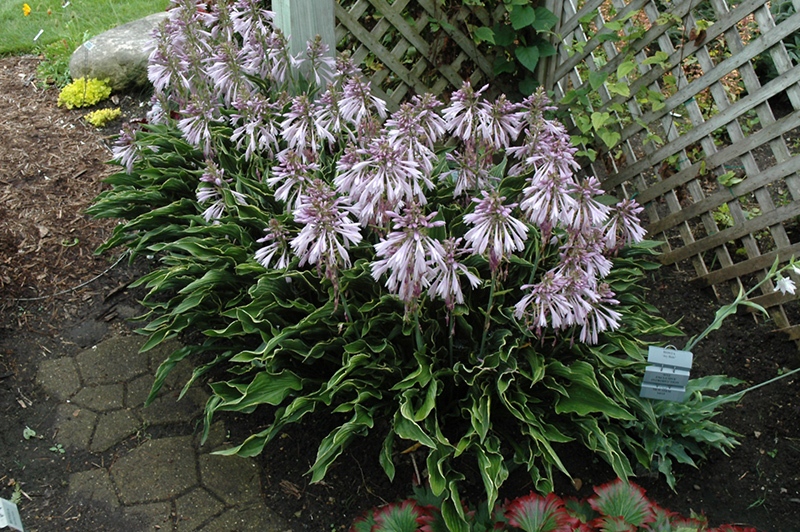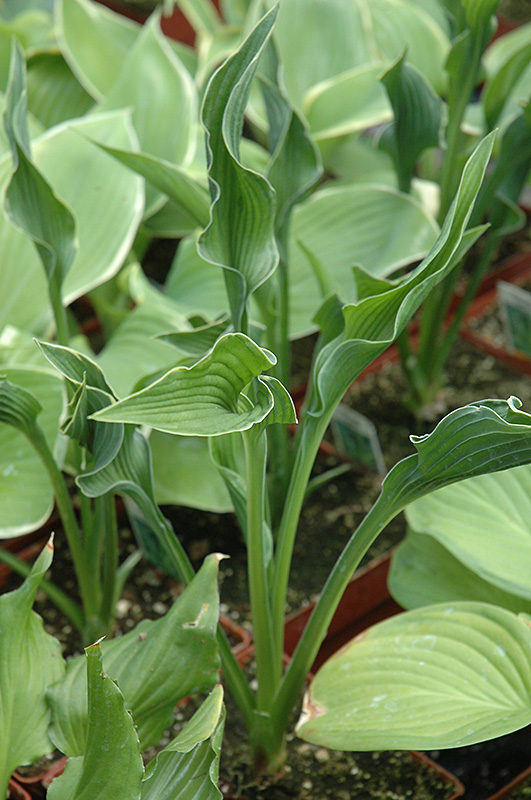Height: 18 inches
Spacing: 12 inches
Sunlight:
![]()
![]()
Hardiness Zone: 3
Other Names: Plantain Lily, Funkia
Description:
Like no other hosta, one for the collectors; upright narrow tightly folded leaves resembling praying hands; dark green with a narrow gold margin and shiny undersides; provides a dramatic accent for the garden or border; lavender flowers are plentiful
Ornamental Features
Praying Hands Hosta features dainty spikes of lavender tubular flowers rising above the foliage in late summer. Its attractive recurved narrow leaves remain dark green in colour with distinctive gold edges throughout the season.
Landscape Attributes
Praying Hands Hosta is a dense herbaceous perennial with tall flower stalks held atop a low mound of foliage. Its relatively fine texture sets it apart from other garden plants with less refined foliage.
This is a relatively low maintenance plant, and is best cleaned up in early spring before it resumes active growth for the season. Gardeners should be aware of the following characteristic(s) that may warrant special consideration;
- Insects
Praying Hands Hosta is recommended for the following landscape applications;
- Mass Planting
- Border Edging
- General Garden Use
- Groundcover
Planting & Growing
Praying Hands Hosta will grow to be about 18 inches tall at maturity, with a spread of 16 inches. When grown in masses or used as a bedding plant, individual plants should be spaced approximately 12 inches apart. Its foliage tends to remain dense right to the ground, not requiring facer plants in front. It grows at a slow rate, and under ideal conditions can be expected to live for approximately 10 years. As an herbaceous perennial, this plant will usually die back to the crown each winter, and will regrow from the base each spring. Be careful not to disturb the crown in late winter when it may not be readily seen!
This plant does best in partial shade to shade. It prefers to grow in average to moist conditions, and shouldn't be allowed to dry out. It is not particular as to soil type or pH. It is somewhat tolerant of urban pollution. This particular variety is an interspecific hybrid. It can be propagated by division; however, as a cultivated variety, be aware that it may be subject to certain restrictions or prohibitions on propagation.


